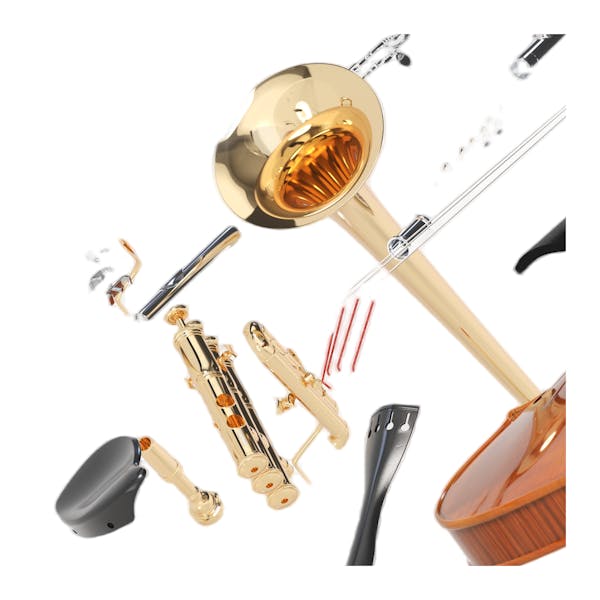Hammers
Hammers offers over 1,000 cinematic sounds spanning over 50 different drums, including detailed hits, ensembles, performance loops and genre-bending warps.
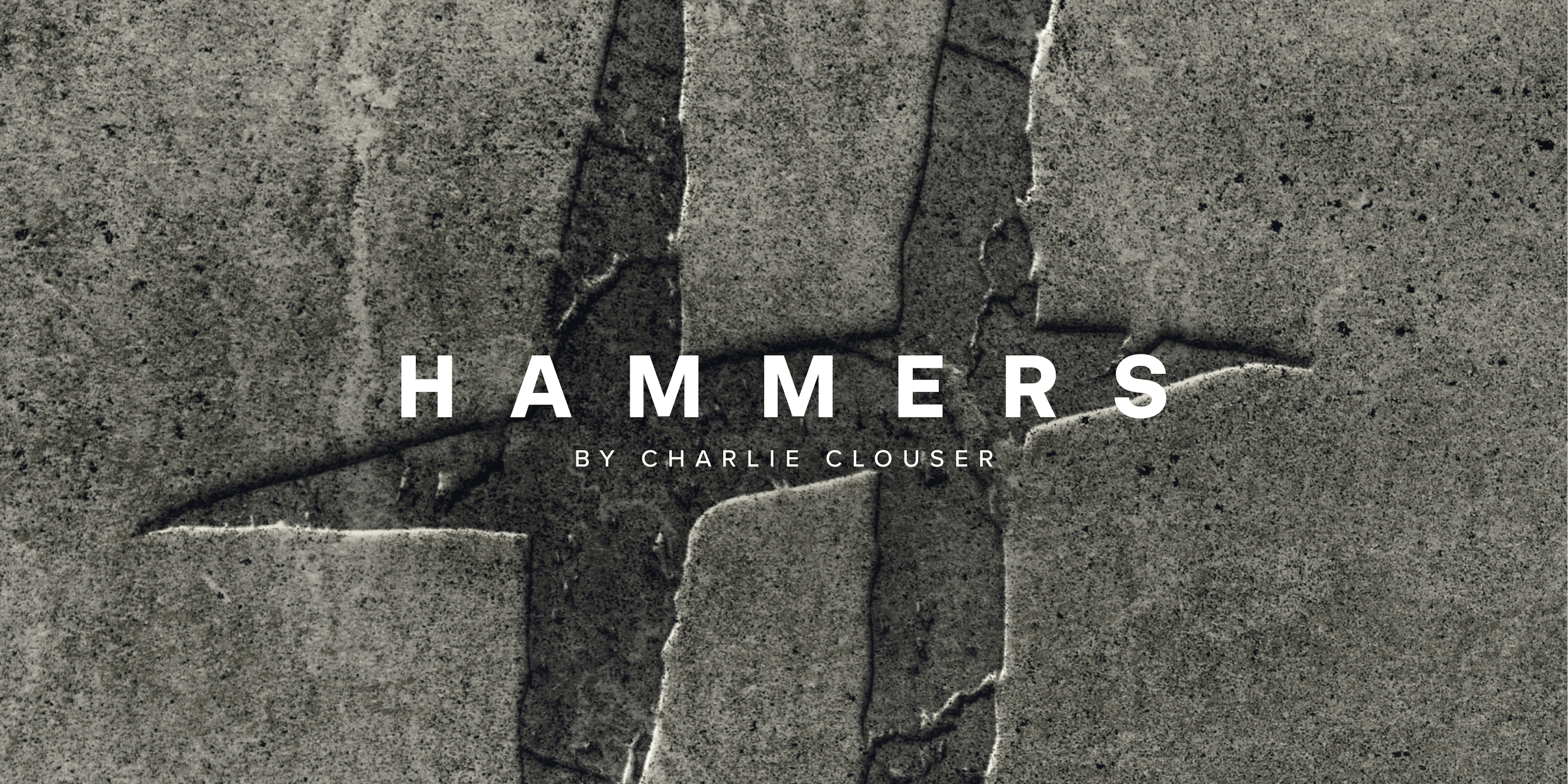
Brutalist drums for maximum impact
Make an impact with an explosive collection of drums and percussion. Created with acclaimed film composer Charlie Clouser (Saw, Resident Evil: Extinction, Nine Inch Nails), Hammers offers over 1,000 cinematic sounds spanning over 50 different drums, including detailed hits, ensembles, performance loops, and genre-bending warps.
Supercharge your compositions with energetic performances recorded in a Brutalist space composed of concrete, glass, and steel—allowing for a uniquely sharp attack and controlled reverb. A must-have for composers and producers of all levels, Hammers will elevate your scores for action, drama, horror, TV procedurals, game music and more.
In this page:
- Hard drive delivery available at checkout
- You can buy now and download any time
 Spitfire Audio App required
Spitfire Audio App required
50 drums
10 mic signals
Dedicated plugin
Listen to Hammers
Hammers only
Hammers only
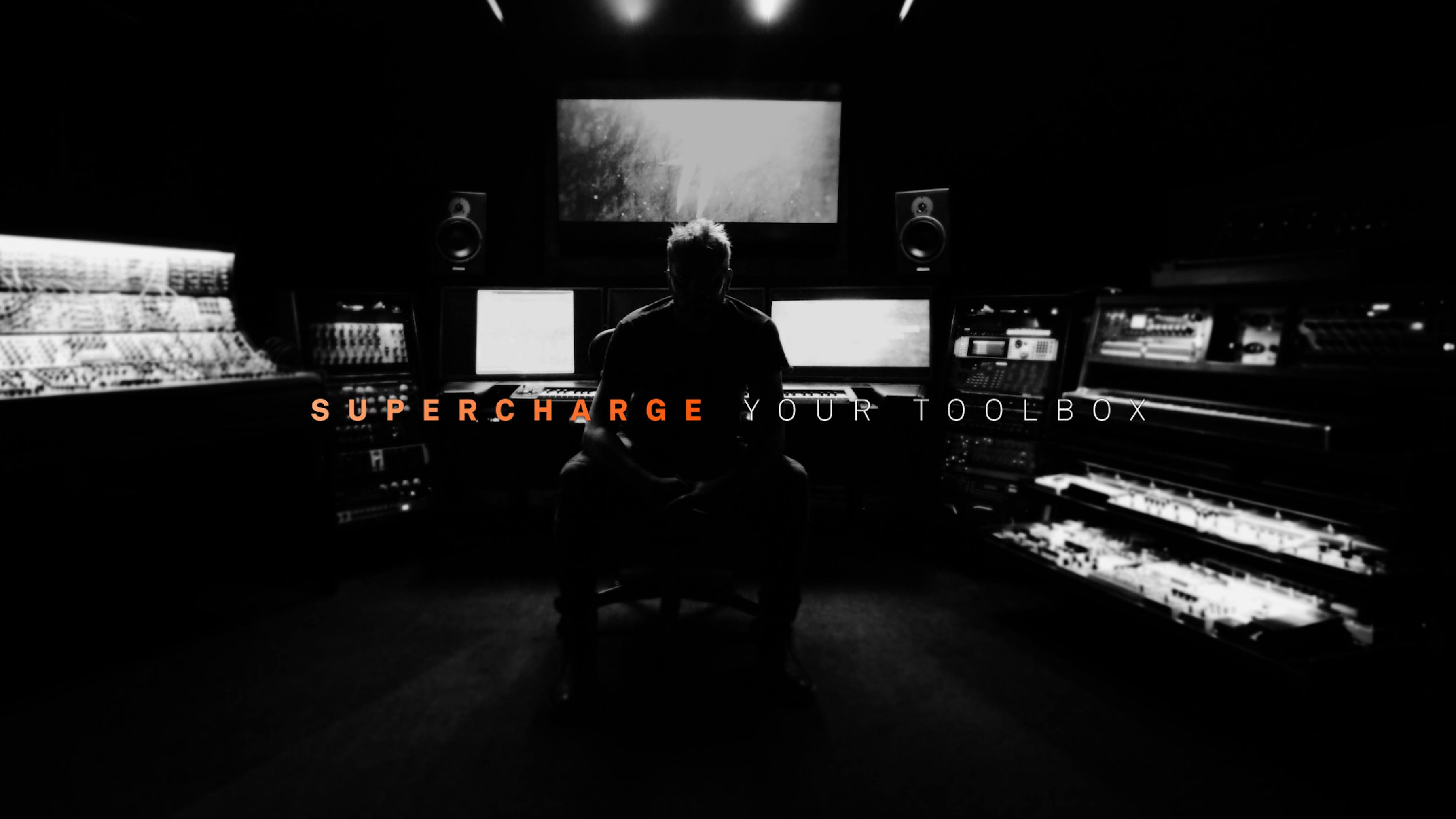
This library is transcendent, it lifts our craft up an echelon and takes us into a new chapter. Cinematic drums from 2021 and beyond are going to sound like this.
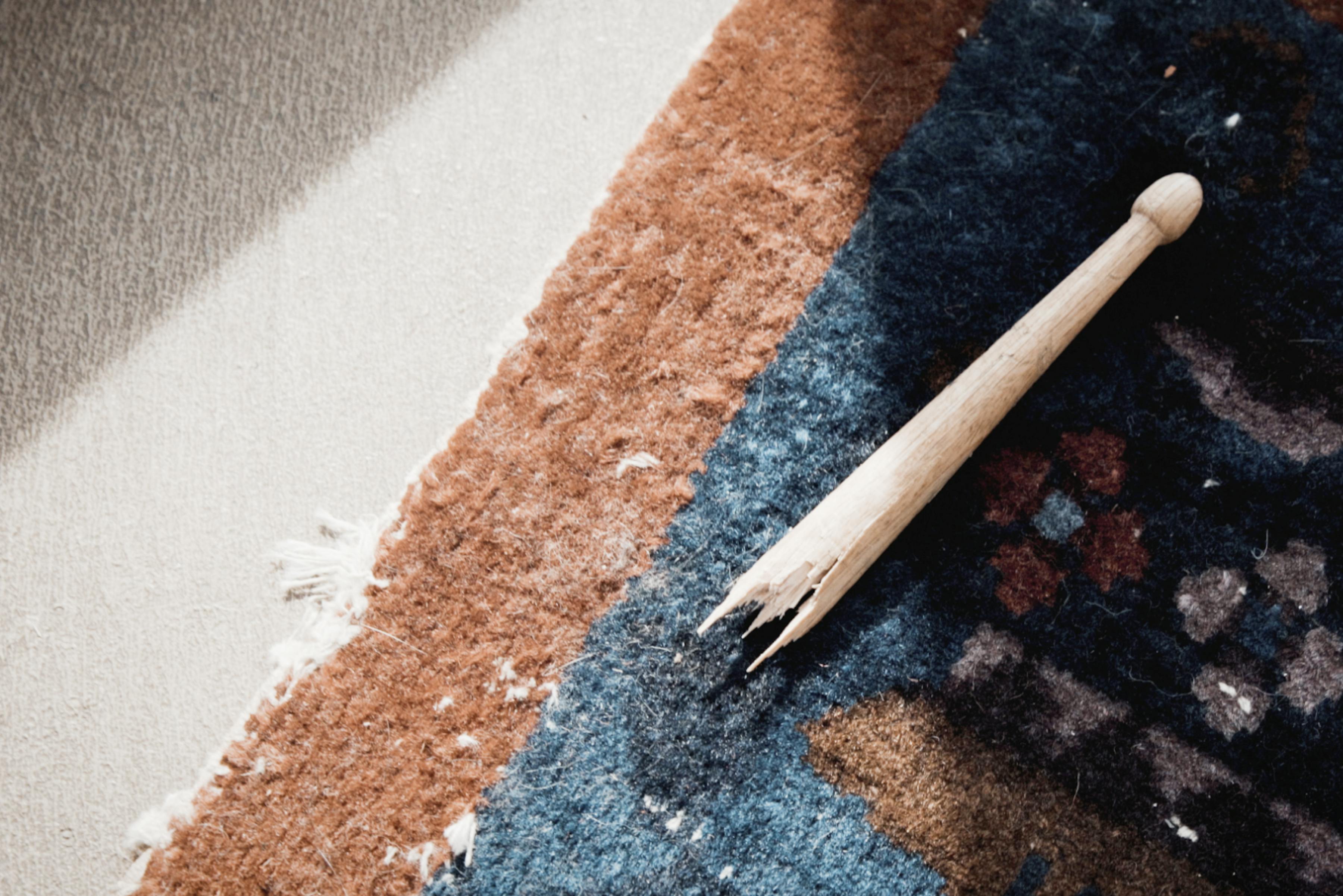
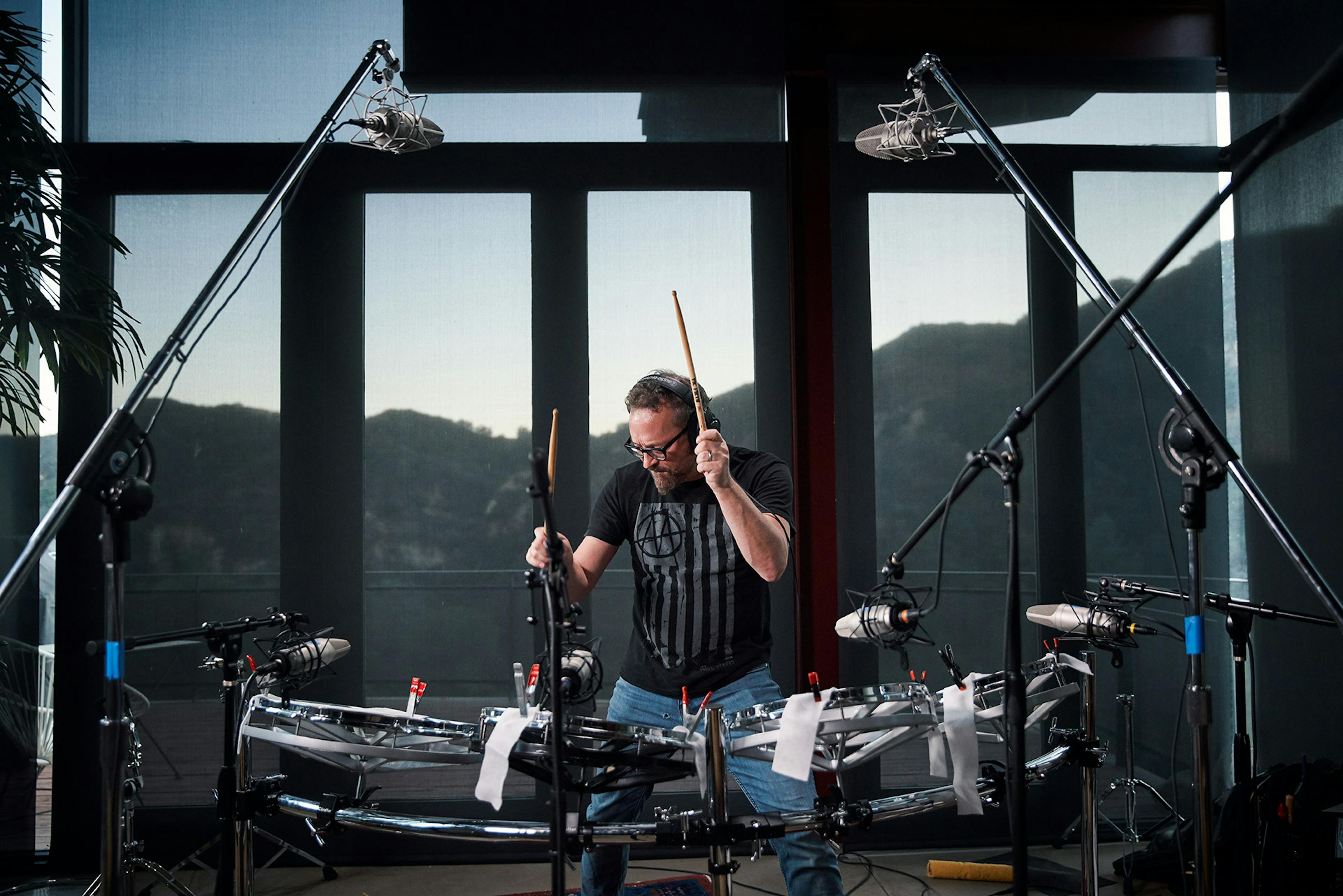
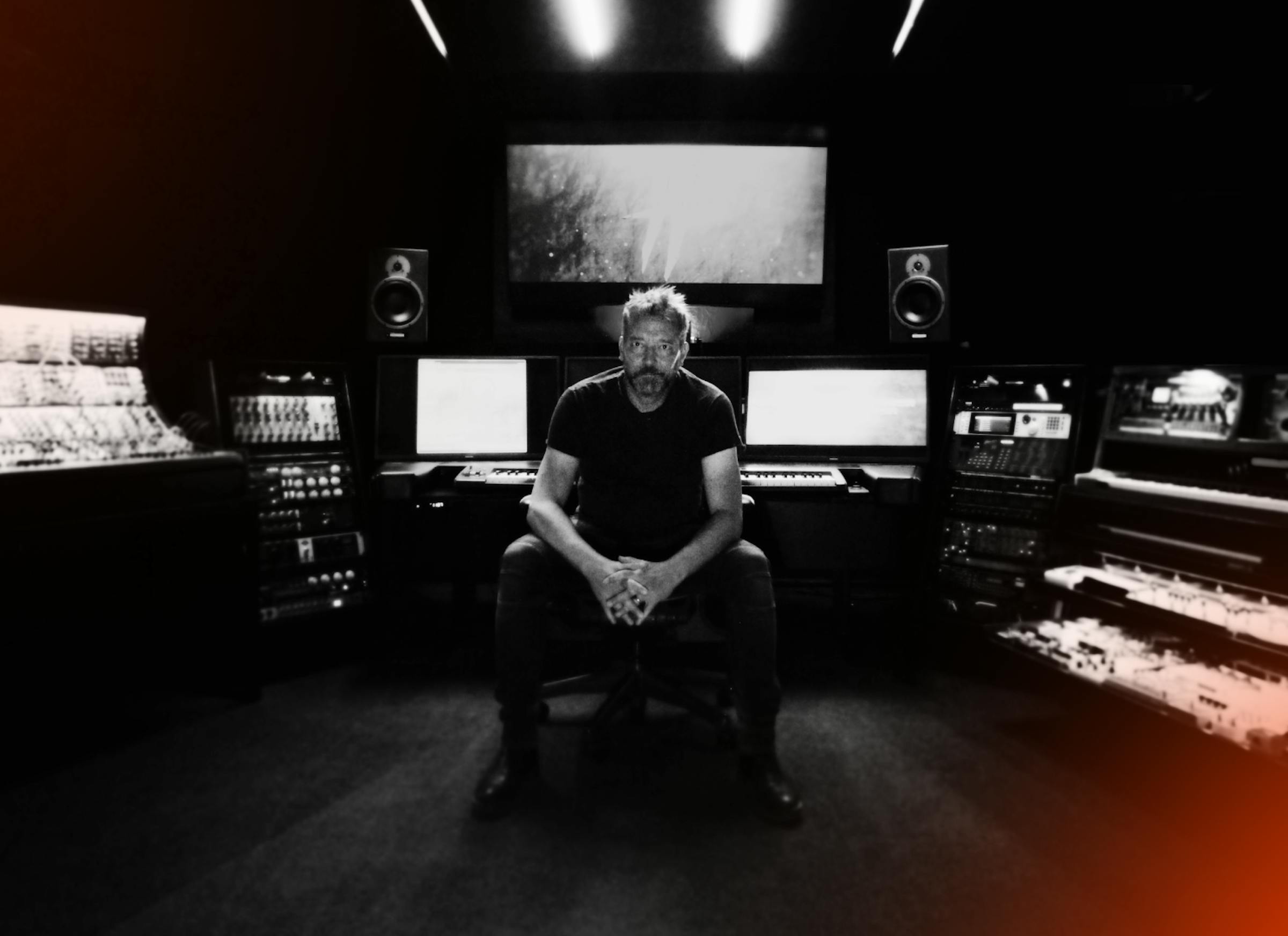
Behind The Samples
At Home with Charlie Clouser
For a deeper look into the making of Hammers, sit back and watch the documentary film Behind The Samples.
Hammers represents the best possible presentation of my personal vision for the way huge cinematic drums and percussion should sound, with enough variety and flexibility of signals for everyone to craft their own personalised interpretation.
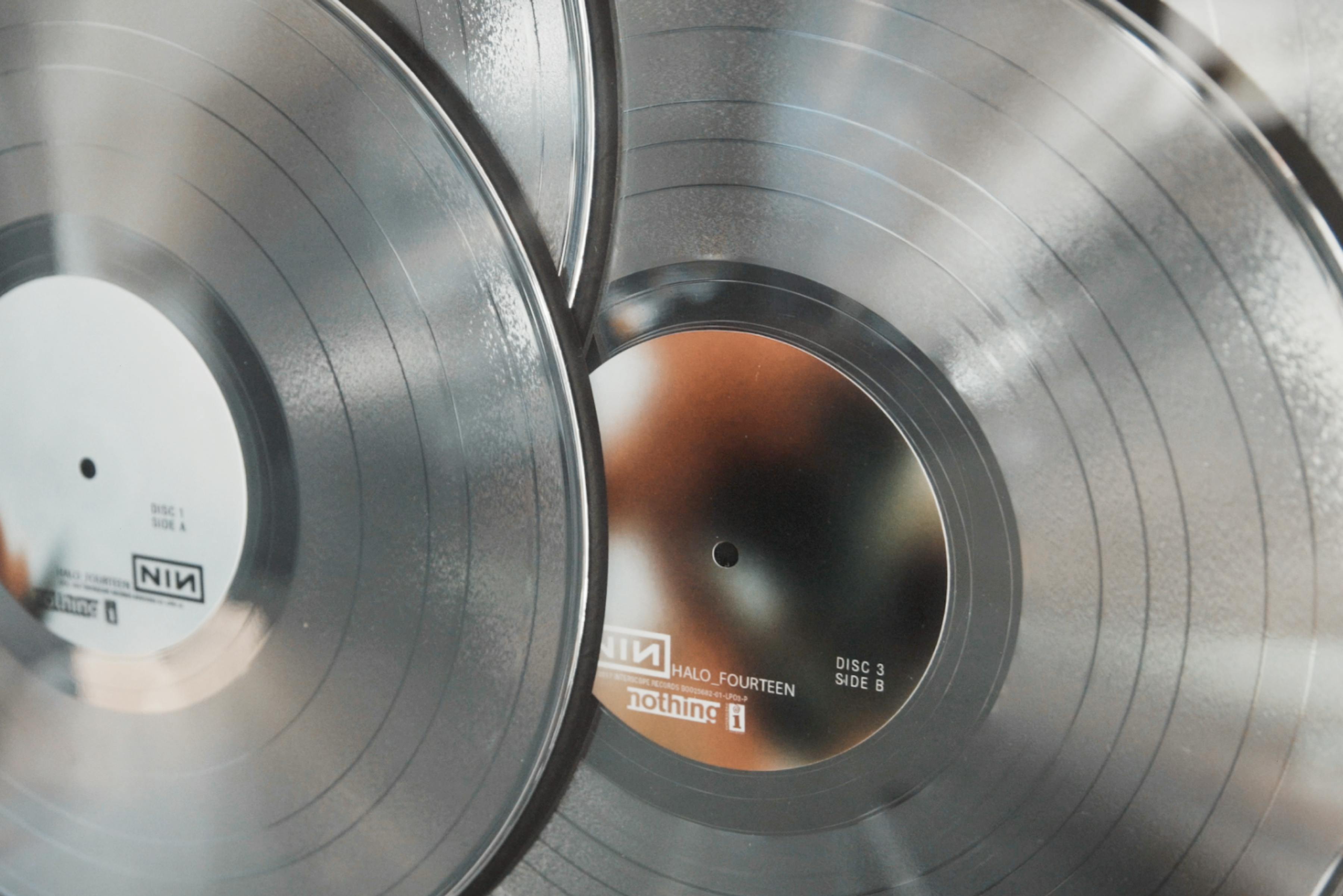

Devilish details
A custom “key brick” layout was developed by Charlie allowing for a wide range of MIDI performance styles, with total consistency across the drum types in Hammers. Laying out each drum across six adjacent keys following the same order (Hit, Ruff, Hit, Flam, Hit, Roll) allows you to play the hits and ornaments in between them for quick improvisation. This then repeats up the keyboard giving you the option to move MIDI performances between drums by simply dragging the MIDI information up or down the keyboard or to other instances of Hammers. Except for a few of the miscellaneous Scrap Metal sounds, this mapping scheme is completely consistent across every drum type, so it’s a matter of seconds to take a finished performance from the Darbukas and hear it playing back perfectly on the Frame Drums, Surdos, Roto-Toms, or any instrument in the library.
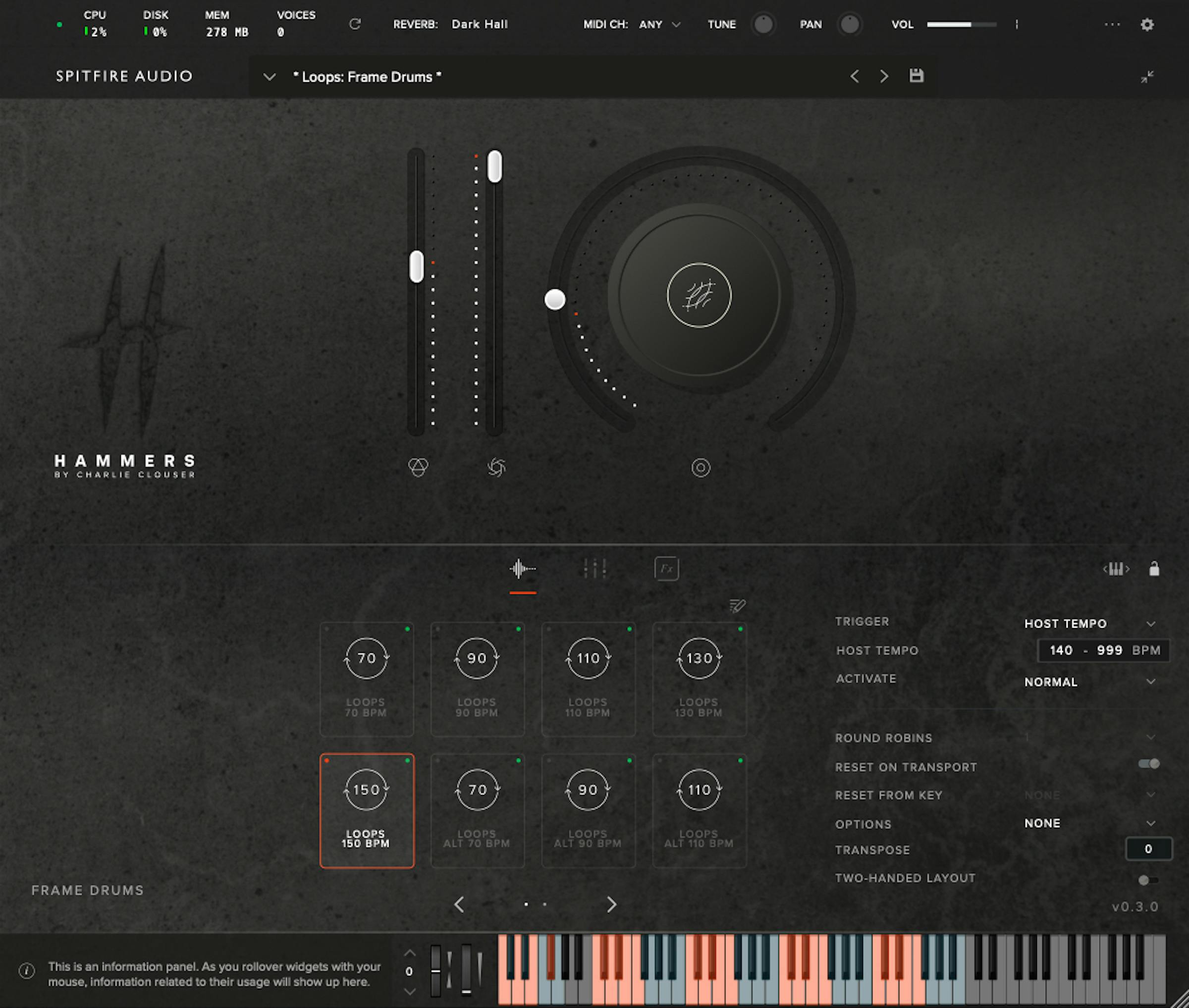
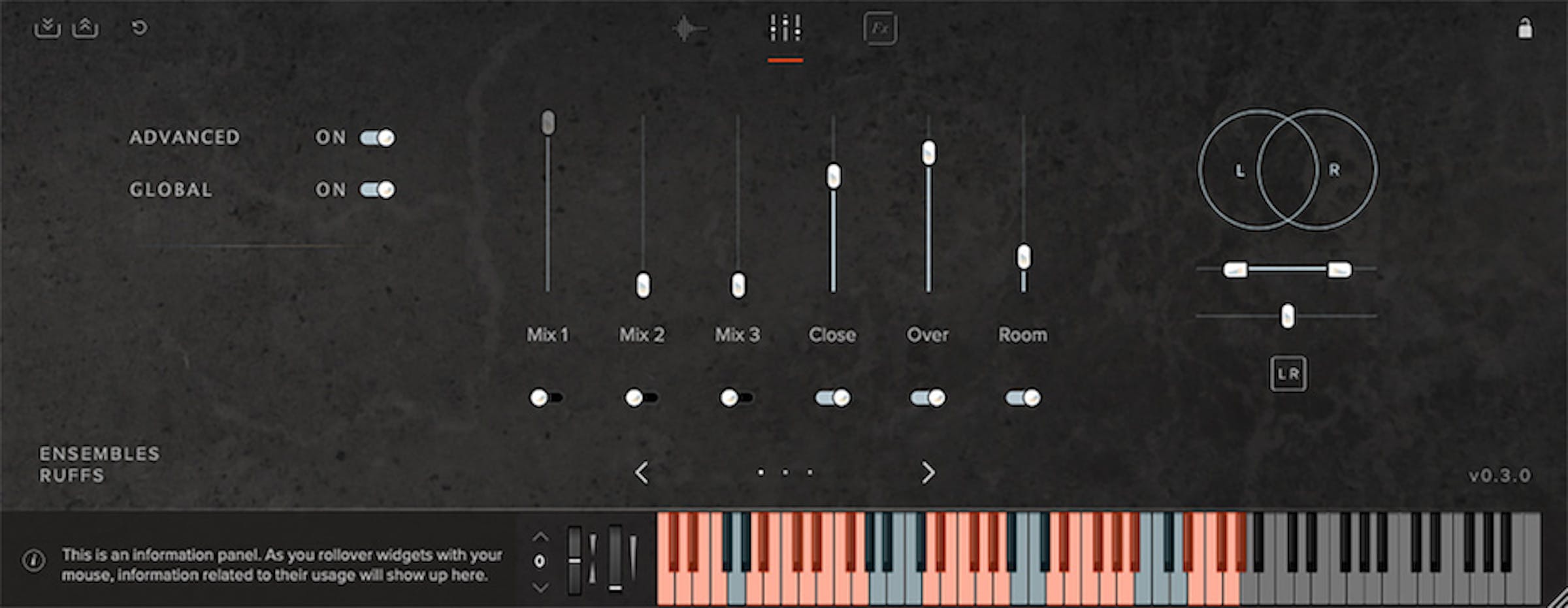
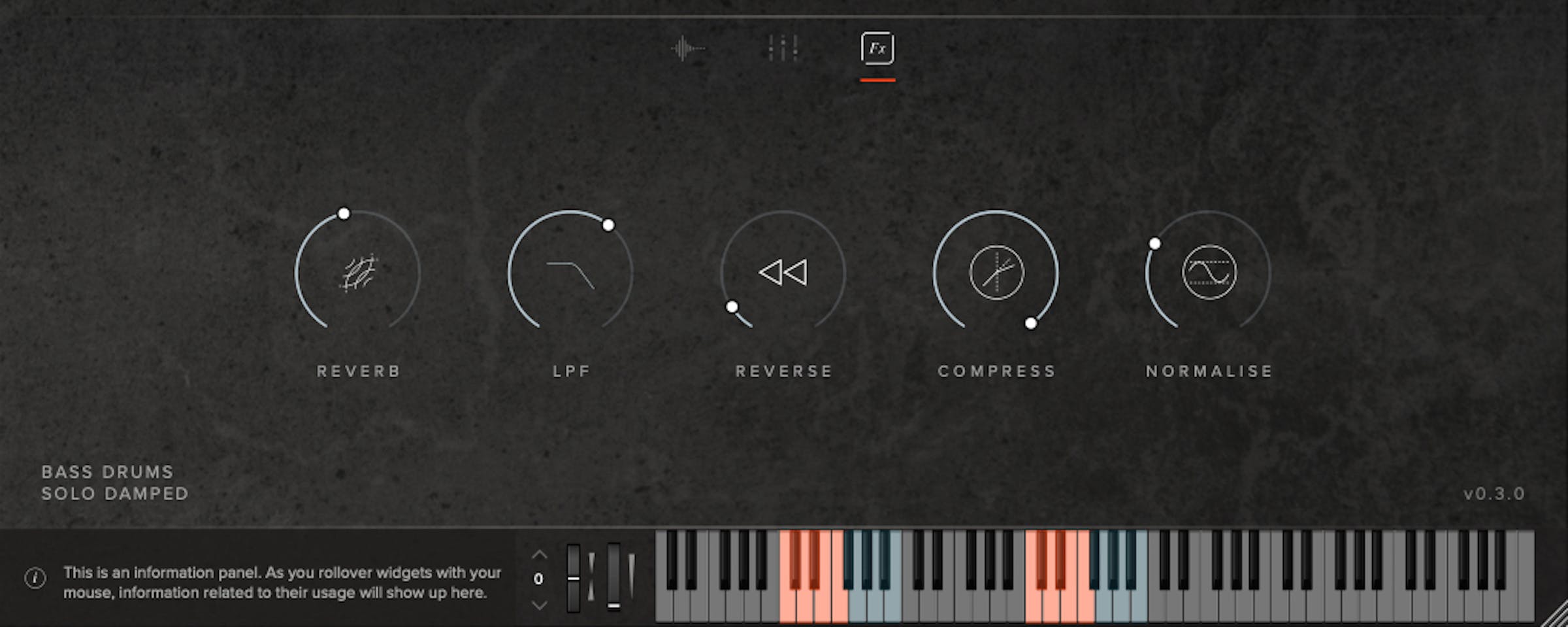

Before spending nearly a decade as the keyboardist and programmer in Nine Inch Nails and two decades composing violent and intense scores for films like the Saw horror movie franchise, Charlie was originally a drummer. As sampling technology evolved in the early 1990s, Charlie obsessively built elaborate sample collections which led to him being one of the go-to guys in Los Angeles for drum programming, remixes, and mad-scientist loop artistry, working with industrial and metal bands like White Zombie, Prong, Killing Joke, and Ministry, as well as television and film composers. However it was a chance encounter with Trent Reznor that led to being sucked into the swirling vortex of talent in the Nine Inch Nails camp for nearly a decade, where he became the keyboardist in the NIN live band, and extra synth and drum programming, sound design, and remixes for artists ranging from David Bowie to Rammstein.
After leaving Nine Inch Nails in 2001, Charlie returned to the film scoring world, with his first score for Saw, which spawned a global horror movie franchise eighteen years old and nine movies deep. Charlie has also been known for his scores for network television dramas, bringing his unsettling and edgy sound to each production. Always chasing the intense emotions of his early industrial bands, he’s forged a sound in his scores that brings a sense of impending doom and chaotic desperation that supports the action on screen. Charlie’s never-ending search for bigger, heavier, more brutal sounds means that he always records and mixes his own drums for his scores, and now, with Hammers, his personally crafted sounds are finally escaping into the outside world for the first time.
What's included
Inside hammers
Instruments
- Bass Drums
- Surdos
- Toms
- Roto-Toms
- Darbukas
- Frame Drums
- Scrap Metals
- Snare
Techniques
- Hit - Recording of a single hit.
- Flam - One soft grace note is played just before the main note, creating a “flam” effect.
- Ruff - A single stroke with one hand preceded by two lighter strokes in the opposite hand.
- Roll - Series of hits that follow each other so quickly that they make a continuous sound.
Ensembles (hits, flams, ruffs, rolls)
Bass drums
Ludwig Bonham 26” kicks, a Cadeson 32”, the Yamaha 36”. The 26” kicks are punchy and solid, The 32” are deep and heavy and the Yamaha 36” drum produces an earth-shaking 808-like pure tone that must be heard to be believed.
- Solo Damped 36"
- Solo Damped 32"
- Solo Open 36"
- Solo Open 32"
- Solo Open 26"
- 4 Player
Surdos
A set of four Meinl surdo drums at diameters of 16”, 18”, 20”, and 22” were recorded, their synthetic heads and aluminum shells provide a warm yet punchy sound with a well-defined attack when played with thick, heavy sticks.
- Solo 22"
- Solo 20"
- 4 Player
Toms
The full set of six toms from two unique Ludwig kits were recorded, with all sizes recorded in solo and two-player configurations, and with the four-player ensemble consisting of two 16” and two 18” floor toms. The solo drums were recorded with sticks, wire brushes, and soft 18” paint rollers, which deliver a sound similar to a wool mallet but with a more detailed and pronounced attack. Expertly tuned, with a mixture of Remo Ambassador and Emperor coated heads, they have a solid, massive sound with a long but controlled decay.
- Solo 18”
- Solo 16”
- Solo 14”
- 2 Player 18”
- 2 Player 16”
- 2 Player 14”
- 4 Player
- Rollers 14”
- Rollers 14”
- Brushes 18”
- Brushes 14”
- 4 Player
Roto-toms
Capturing the less common 12”, 14”, 16”, and 18” versions, these offer a nasty, aggressive tone, especially when slack-tuned as Charlie prefers. Surrounded in the bright and dense reverberation of his recording space, these Rototoms produce a violent smack that is a great complement to the longer, warmer sound of the surdos and toms, and bridge the gap to the higher percussion instruments.
- Solo 16”
- Solo 14”
- Solo 12”
- 2 Player Low
- 2 Player High
- 4 Player
Frame drums
Usually intended to be played with hands or fingers, frame drums don’t stand up well to being played aggressively with sticks, mallets, and brushes, with many of the synthetic heads were used did not survive the sessions intact. The sizes used for these recordings were 14” and 16”, played with wire brushes and 18” paint rollers, and recorded in both the center and edge positions. The resulting samples have a very detailed attack and can produce performances with startling realism.
- Solo 16” Centre
- Solo 16” Edge
- Solo 14” Centre
- Solo 14” Edge
- Brushes 16” Centre
- Brushes 16” Edge
- Brushes 14” Centre
- Brushes 14” Edge
Snares
Initially not planned to be recorded, Charlie was taken by the awesome sounds of the vintage Ludwig Supraphonic 6.5” x 14” snare and had to captured them.
Snare on
- Centre
- Edge
- Rim
Snare off
- Centre
- Edge
- Rim
Darbukas
Like the frame drums, darbukas are generally played with the fingertips, and while the shells are made from aluminum, the plastic heads are quite thin and Charlie likes them tuned fairly tightly, so two complete four-drum sets were used, along with a bag full of spare plastic heads.
- Solo Centre 8”
- Solo Centre 7”
- Solo Centre 6”
- Solo Centre 5”
- Solo Edge 8”
- Solo Edge 7”
- Solo Edge 6”
- Solo Edge 5”
- Centre & Edge Low 8” Centre
- Centre & Edge Low 8” Edge
- Centre & Edge Low 7” Centre
- Centre & Edge Low 7” Edge
- Centre & Edge High 6” Centre
- Centre & Edge High 6” Edge
- Centre & Edge High 5” Centre
- Centre & Edge High 5” Edge
- 2 Player
Scrap metals
Long a favorite component of Charlie’s percussion grab bag, an entire road-case full of pieces of steel, iron, and brass hardware and scrap metal was auditioned and carefully selected to create four categories of tones; Pipes High, Pipes Low, Iron, and Misc, with that last category consisting of more than twenty of the best from more than a hundred bars, brackets, cans, lids, and other bits of hardware that Charlie has collected over the years for just this purpose. Altogether these recordings provide a wealth of tonalities ranging from tight ticky-tacks, to bell-like tones, to trashy and downright violent smacks and booms. The Loops provided the ideal source for the extensive processing used to create the Warps, and both the Loops and the Warps work especially well when played using the unique Reverse functionality in Hammers.
- Pipe Low
- Pipe High
- Iron
- Misc
Individual drum hits (hits, flams, ruffs, rolls)
Bass drums
- Solo Damped 36"
- Solo Damped 32"
- Solo Open 36"
- Solo Open 32"
- Solo Open 26"
- 4 Player
Surdos
- Solo Damped 22"
- Solo Damped 20"
- 4 Player
Toms
- Solo 18”
- Solo 16”
- Solo 14”
- 2 Player 18”
- 2 Player 16”
- 2 Player 14”
- 4 Player
- Rollers 18"
- Rollers 14"
- Brushes 18"
- Brushes 14"
Roto-toms
- Solo 16”
- Solo 14”
- Solo 12”
- 2 Player Low
- 2 Player High
- 4 Player High
Frame drums
Solo
- 16” Centre
- 16” Edge
- 14” Centre
- 14” Edge
Brushes
- 16” Centre
- 16” Edge
- 14” Centre
- 14” Edge
Snare
Snare on
- Centre
- Edge
- Rim (Single Hit Only)
Snare off
- Centre
- Edge
- Rim (Single Hit Only)
Darbukas
- Solo Centre 8”
- Solo Centre 7”
- Solo Centre 6”
- Solo Centre 5”
- Solo Edge 8”
- Solo Edge 7”
- Solo Edge 6”
- Solo Edge 5”
- Centre & Edge Low 8"
- Centre & Edge Low 7"
- Centre & Edge High 6”
- Centre & Edge High 6”
- 2 Player
Scrap metals
- Pipe Low
- Pipe 1
- Pipe 2
- Pipe 5
- Pipe High
- Pipe 4
- Pipe 3
- Pipe 6
- Iron
- Iron Front 1
- Iron Back 1
- Iron Front 2
- Iron Back 2
- Misc (Single Hits Only)
- Misc 1 (Single Hits Only)
- Misc 2 (Single Hits Only)
- Misc 3 (Single Hits Only)
- Misc 4 (Single Hits Only)
- Misc 5 (Single Hits Only)
- Misc 6 (Single Hits Only)
Loops
Carefully composed by Charlie Clouser in 8 bar loop phrases and delivered to give you the ability to build your own version of patterns by stacking and rearranging via clear keymapping, breaking up loops and end hits, so you can control and develop the performances to suit your needs.
Bass drums
- Loops 70BPM
- Loops 90BPM
- Loops 110BPM
- Loops 130BPM
- Loops 150BPM
- Loops Alt 70BPM
- Loops Alt 90BPM
- Loops Alt 110BPM
- Loops Alt 130BPM
- Loops Alt 150BPM
Surdos
- Loops 70BPM
- Loops 90BPM
- Loops 110BPM
- Loops 130BPM
- Loops 150BPM
- Loops Alt 120BPM
- Loops Alt 130BPM
Toms
- Loops 70BPM
- Loops 90BPM
- Loops 110BPM
- Loops 130BPM
- Loops 150BPM
- Loops Alt 100BPM
- Loops Alt 125BPM
- Loops Alt 105BPM
Rototoms
- Loops 70BPM
- Loops 90BPM
- Loops 110BPM
- Loops 130BPM
- Loops 150BPM
Frame drums
- Loops 70BPM
- Loops 90BPM
- Loops 110BPM
- Loops 130BPM
- Loops 150BPM
- Loops Alt 70BPM
- Loops Alt 90BPM
- Loops Alt 110BPM
- Loops Alt 130BPM
- Loops Alt 150BPM
Darbukas
- Loops 70BPM
- Loops 90BPM
- Loops 110BPM
- Loops 130BPM
- Loops 150BPM
- Loops Alt 90BPM
Scrap metal
- Loops 70BPM
- Loops 90BPM
- Loops 110BPM
- Loops 130BPM
- Loops 150BPM
- Loops Alt 70BPM
- Loops Alt 90BPM
- Loops Alt 110BPM
- Loops Alt 130BPM
- Loops Alt 150BPM
Warped loops
Bass drums
- Warped Loops 70BPM
- Warped Loops 90BPM
- Warped Loops 110BPM
- Warped Loops 130BPM
- Warped Loops 150BPM
- Warped Loops Alt 70BPM
- Warped Loops Alt 90BPM
- Warped Loops Alt 110BPM
- Warped Loops Alt 130BPM
- Warped Loops Alt 150BPM
Surdos
- Warped Loops 70BPM
- Warped Loops 90BPM
- Warped Loops 110BPM
- Warped Loops 130BPM
- Warped Loops 150BPM
- Warped Loops Alt 120BPM
- Warped Loops Alt 130BPM
Toms
- Warped Loops 70BPM
- Warped Loops 90BPM
- Warped Loops 110BPM
- Warped Loops 130BPM
- Warped Loops 150BPM
- Warped Loops Alt 100BPM
- Warped Loops Alt 125BPM
- Warped Loops Alt 105BPM
Rototoms
- Warped Loops 70BPM
- Warped Loops 90BPM
- Warped Loops 110BPM
- Warped Loops 130BPM
- Warped Loops 150BPM
Frame drums
- Warped Loops 70BPM
- Warped Loops 90BPM
- Warped Loops 110BPM
- Warped Loops 130BPM
- Warped Loops 150BPM
- Warped Loops Alt 70BPM
- Warped Loops Alt 90BPM
- Warped Loops Alt 110BPM
- Warped Loops Alt 130BPM
- Warped Loops Alt 150BPM
Darbukas
- Warped Loops 70BPM
- Warped Loops 90BPM
- Warped Loops 110BPM
- Warped Loops 130BPM
- Warped Loops 150BPM
- Warped Loops Alt 90BPM
Scrap metal
- Warped Loops 70BPM
- Warped Loops 90BPM
- Warped Loops 110BPM
- Warped Loops 130BPM
- Warped Loops 150BPM
- Warped Loops Alt 70BPM
- Warped Loops Alt 90BPM
- Warped Loops Alt 110BPM
- Warped Loops Alt 130BPM
- Warped Loops Alt 150BPM
Mixes & Mics
Mix 1
A relatively un-processed mix of Close, and Over, but perhaps with a bit of Room, Catwalk and Chimney as well, generally aiming for a less reverberant, closer sound that is fairly civilized and intimate without being completely dry.
Mix 2
A more heavily processed version, with more of the Room mics used to create a denser, more reverberant sound, and for many users, this will be the go-to for a large but not over-the-top sound. For many of the drum types additional specialised processing was used to make this mix bigger than life, including everything from hardware compressors like a UBK-modified Fatso, Distressors, and even a Cwejman EuroRack compressor, to EQ, distortion, and saturation units like Neve and API EQs, SansAmp PSA-21 and RBI processors, SPL Transient Designers, pitch shifters and distortions from the Eventide H-9000, and a few specialised plug-ins… I think you get the point.
Mix 3
The full-fat, no-holds-barred, turbo-charged Signal. This is the biggest of them all. Multiple layers of compression, pitch-shifted signals mixed with un-shifted signals, transients split off and processed separately, layered and stacked and side-chained right up to the threshold of pain, Mix 3 is what you need when you want your drums to be over-the-top.
Microphones
- Close
- Overheads
- Room
- Close Pitched
- Overheads Pitched
- Room Pitched
- Crush *
- Crush Pitched *
- Subs *
- Close Rear *
*Not available across all drums (mic slider empty when not present)
FAQs
How does your dedicated plugin work?
Our dedicated plugin libraries work as standalone instruments in your DAW, meaning that no serial number is provided and the authorisation process happens during your download. We provide an AU, VST2, VST3 and an AAX, so as long as your chosen DAW supports one of those plugin formats, you’re good to go.
Why is Hammers in your own plugin, and what are the benefits?
Our own plugin is constantly evolving with new features and optimisations that aren’t possible in Kontakt. We can do more in depth sampling without any risk of crashing, and can also compress it to create perfect sample quality at smaller download sizes.
Read more FAQs for this productTech specs
Mac system requirements
Mac OS X 10.15 to OS 13
Minimum: 2.8GHz i5 minimum (quad-core), 8GB RAM
Recommended: 2.8GHz I7 (six-core), 16GB RAM
Both Intel and Apple Silicon/ARM are supported
32-bit systems are not supported.
PC system requirements
Windows 10 or Windows 11 - (Latest Service Pack, 64-bit)
Minimum: Intel 2.8 GHz i5 (quad-core) or AMD Ryzen 5, 8GB RAM
Recommended: Intel Core i7 6th gen and later or AMD Ryzen 7, 16GB RAM
32-bit systems are not supported.
File size
~118744 samples
100.0 GB download size
Too large to download? Choose hard drive delivery at checkout
100.00 GB disk space required during install
